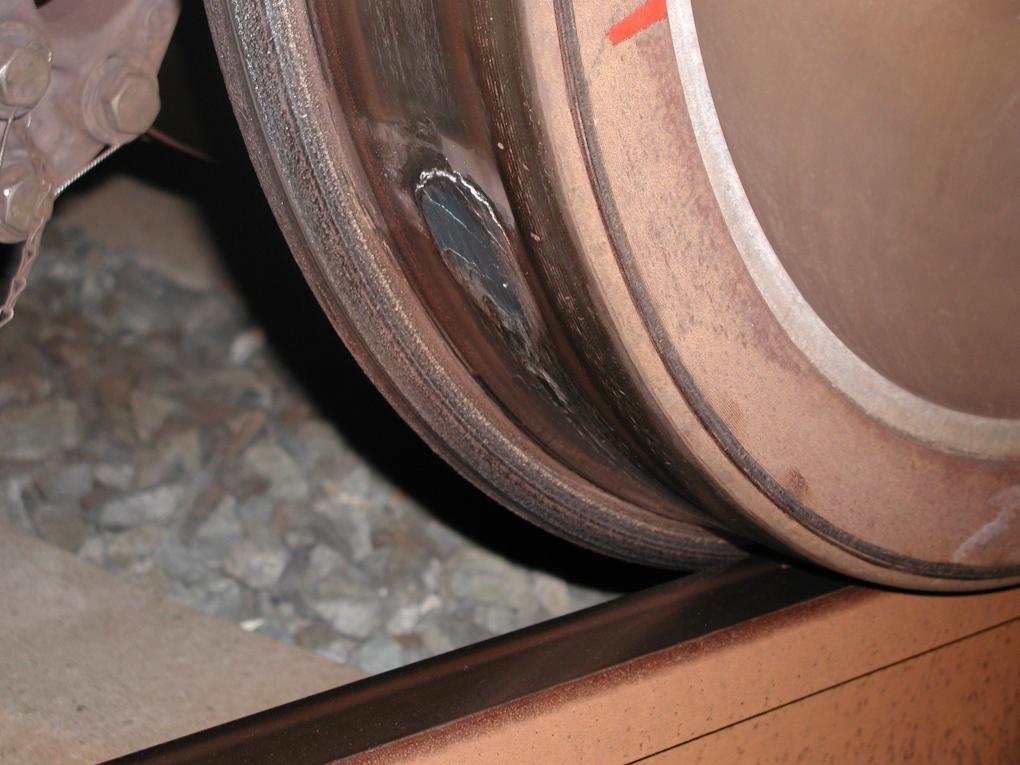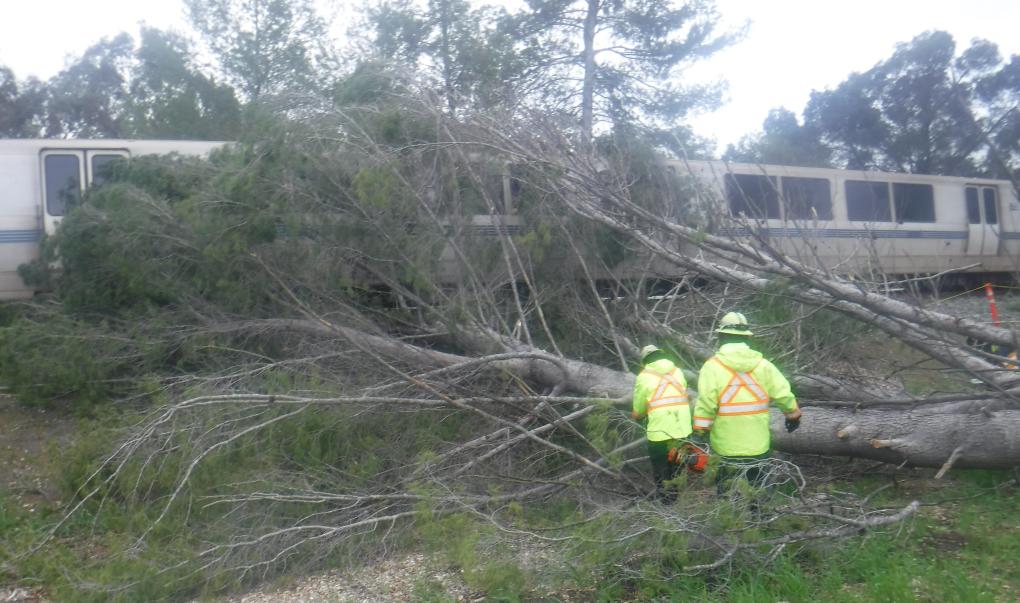Traffic is a nightmare when bad weather hits the Bay Area. Turning to transit is a great option to avoid driving in unsafe road conditions.
Weather can also impact BART service and cause delays because BART runs trains at reduced speeds when the rails are wet or slippery and during extreme heat events. This is common practice for rail systems with open-air tracks across the world. BART is very transparent with riders when we run trains at reduced speeds, and we issue BART Service Advisories and make announcements, so people know what to expect.
Running trains at reduced speeds causes delays of at least 8 minutes in impacted areas. These delays can compound with other issues, resulting in delays of approx. 20 minutes.
Even with these impacts, BART remains a much safer option to driving during bad weather.
When it rains or when the rails are slippery from frost
BART uses a professional weather forecasting service to monitor weather conditions in the areas surrounding BART trackways. The Operations Control Center (OCC) receives alerts that are customized to track mileposts. Alerts include precipitation and low temperatures that could cause slippery, frosty conditions on the rails. When this happens, we automatically run trains at slower speeds in the impacted areas of exposed trackway. The settings to reduce train speeds expire shortly after the weather alerts expire to allow for adequate track drying.
When exposed tracks are wet, BART trains require a longer stopping distance. Running trains at slower speeds allows trains to slow or stop more gradually when the rails are slippery.
BART will run trains at slower speeds in areas where the temperature dips below 36 degrees Fahrenheit because frost makes the rail slippery.
Preventing Wheel Flat Spots
BART train cars have wheel slide protection, similar to the antilock brake systems found in most cars on the road today. But when the rail is slippery, BART’s automatic train control may determine the train isn’t slowing down quickly enough and will apply a more aggressive layer of braking, bypassing the automatic wheel slide protection.
Inclement weather causes the rail to be slippery and when the train cars are not stopping in the prescribed distance, the wheels and axels lock up and skid to a stop. This sliding motion, instead of spinning, of metal wheels on metal track will cause a flat spot on the wheel.

Train cars with large flat spots must be taken out of service to be reshaped, which is costly and disruptive to riders. If too many cars have wheel flats, we often have to cancel trains or run trains with fewer cars, resulting in crowding. This is why we, and many other transit systems across the world with open-air tracks, run trains slower when tracks are wet.
To reduce the occurrence of wheel flats, BART engineers look at data related to track areas where we experience high rates of wheel flats, such as areas with a longitudinal slope, and then make adjustments to reduce the train speeds allowed in that area to give the train more time to slow down.
When it is hot
BART uses sensors on its tracks to measure rail temperature. When the rail temperature reaches 115 degrees Fahrenheit, BART slows the speed of trains in that area to reduce possible heat-related train derailments caused by sun kinks in the rail. A sun kink is when extreme heat bends or distorts the track.
BART rail is heat-treated prior to installation, which allows for thermal expansion of the rail; however, when there are sharp rises in ambient temperatures, the thermal forces exerted on the rail increase, making it possible for the rail to expand beyond its designed temperature.
Train speeds are reduced in targeted parts of the system as a precautionary measure to give Train Operators more time to react to any observed abnormal rail conditions.
BART crews also do more inspections in areas prone to heat impacts during heat waves.
Extreme wind
BART runs normal service during wind gusts unless something is obstructing our tracks, such as a downed tree.
BART has a preventative maintenance program to protect the system from trees that could be knocked down into the trackway during severe weather. Trees are removed or cut back before winter storms arrive in the Bay Area.
BART cars were built for wind velocity up to 94 MPH. Our nonstandard wide gauge track provides more stability in high winds for our lightweight aluminum cars. All the heavy equipment is mounted under the floor of the train, giving our cars a low center of gravity.

Power outages
Power outages typically do not impact train service because BART has flexibility to pull power from other sections of our traction power supply system, ensuring continuous train operation. The exception to this can occur when there is a power outage impacting a train dispatch yard. For example, if lightning strikes near a yard causes a power failure, our ability to safely dispatch trains could be impacted.
During power outage incidents, critical systems such as tunnel fans are protected by a combination of fixed and portable generators.
Additionally, all BART stations have emergency backup lighting systems. Escalators at stations impacted by a local power outage may be taken out of service. Elevators should remain operational. BART will close a station if it doesn’t have adequate lighting for safe service. BART will also deploy power generators to stations if needed. Fare gates automatically open when there is no power.